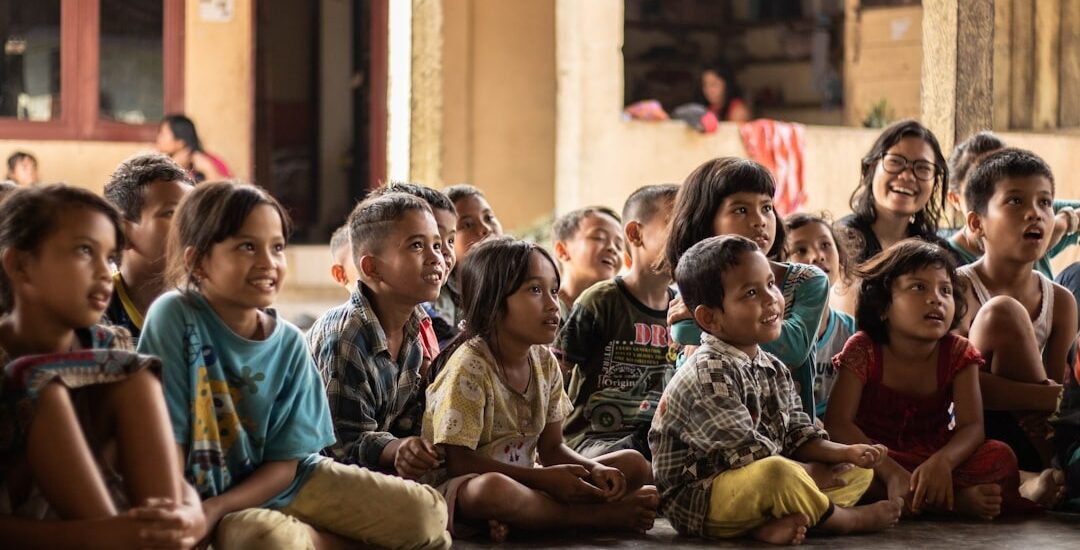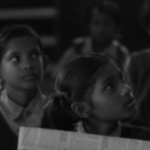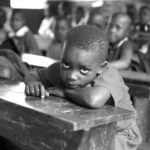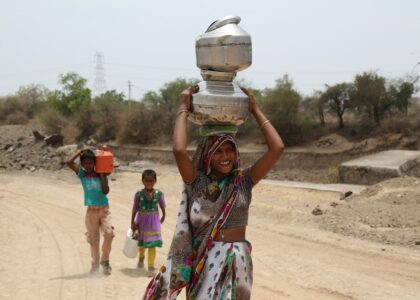A Silent Struggle
In the bustling cities of Indonesia—Jakarta, Surabaya, Bandung—it’s easy to find schools with bright classrooms, modern equipment, and teachers trained to inspire the next generation. But far from the city lights, in villages scattered across the hills of Sukabumi, deep in the forests of Kalimantan, or along the shores of eastern Indonesia in Maluku and Papua, a very different reality unfolds.
Here, children walk miles barefoot to reach schools that are often little more than wooden huts with leaking roofs. Desks wobble, books are shared among five or six students, and the chalkboard—if there is one—is cracked and fading. Teachers are few, sometimes only one for an entire village, and basic necessities like pencils and notebooks are a luxury.
Yet, in the middle of this hardship, one thing shines brighter than anything else: the children’s determination to learn.
This is the story of those children, their struggle, their resilience, and our responsibility to ensure that no child is left behind in the pursuit of education.
The Harsh Reality: Education in Remote Indonesia
Indonesia, an archipelago of more than 17,000 islands, faces enormous challenges in providing equal education. While urban centers flourish, rural and remote areas remain critically underserved.
- According to UNICEF, around 1 in 5 children in Indonesia still face barriers to accessing quality education, especially in rural and eastern regions.
- In Papua, the average school participation rate for children aged 16–18 is only about 60%, compared to over 80% in major cities.
- Teacher shortages are widespread: some schools in Maluku and Kalimantan have only one teacher handling multiple grade levels at once.
Imagine being a child in Sukabumi, West Java. Your classroom has no windows, the wooden floor creaks, and rain drips through the roof onto your notebook. The single teacher is overworked, teaching not just you but also younger children in the same space. Still, you wake up at 5 a.m., help your parents fetch water or work in the rice fields, then walk miles just to sit in that classroom.
This is the daily reality for thousands of children.
Stories from the Ground: Children Who Refuse to Give Up
Let me share a few glimpses of real-life struggles that reflect a wider truth:
- Sukabumi, West Java: A little boy named Ardi walks three kilometers each morning with his younger sister. Their parents cannot afford new shoes, so they share one pair between them. When asked why he still goes to school, Ardi replies: “If I don’t learn, I will always be poor. I want to help my family.”
- Maluku, Eastern Indonesia: Maria, aged 10, attends a school built from bamboo. There are no textbooks, and most lessons are oral. She dreams of being a nurse because her village has no healthcare workers. Yet she has never even seen a real hospital.
- Papua: Teachers are often absent due to long travel distances and lack of resources. Still, children gather in empty classrooms and read old notebooks together. One child, Yohanis, says: “Even if the teacher doesn’t come, we can still learn from each other.”
These stories are heartbreaking, but they are also deeply inspiring. The children’s courage proves one thing: poverty may break walls, but it cannot break the spirit of those who want to learn.
Why Education Matters: Beyond Classrooms and Books
Education is not just about learning to read and write. For these children, it is the key to survival and the path to dignity.
- Education reduces child labor. Without schools, children are forced to work in fields, mines, or domestic labor.
- Education reduces early marriage. In some rural areas, girls drop out at age 12 or 13 to marry. With education, they have choices.
- Education builds resilience. Children who learn basic literacy, numeracy, and life skills can break the cycle of poverty for their families.
Every child who finishes school has a better chance of securing employment, contributing to their community, and shaping Indonesia’s future.
Without education, entire generations risk being trapped in poverty.
The Barriers: Why Remote Areas Are Left Behind
- Geography: With thousands of islands, transportation is a nightmare. Schools in mountain villages or small islands are hard to reach.
- Teacher Shortages: Many teachers refuse to work in remote areas due to poor facilities and low pay.
- Lack of Resources: Schools lack basics like books, chairs, electricity, and clean water.
- Poverty: Families often prioritize survival over schooling. Children help in the fields instead of attending class.
- Neglect: Policies often focus on big cities, leaving small villages forgotten.
Hope in the Midst of Struggle
Despite the challenges, children in remote Indonesia remain resilient. Their smiles, their dreams, and their laughter echo louder than the sound of poverty.
One teacher in Sukabumi once said: “I may not have books, but I teach them using stories, songs, and even the sky above us. As long as they have the will to learn, I will find a way to teach.”
This determination is why we cannot give up on them.
The Role of Grow Foundation
At Grow Foundation, we believe every child deserves the right to a decent education—no matter where they are born.
Our mission is clear:
- Provide basic school supplies like books, pencils, and uniforms.
- Support teachers with training, incentives, and resources.
- Rebuild and repair school facilities to make them safe and functional.
- Partner with local communities to motivate families to keep their children in school.
- Use volunteers and digital learning platforms where possible to bridge the teacher gap.
We are not just handing out charity; we are investing in hope. Every pencil, every book, every lesson contributes to building a future leader.
Solutions: What Needs to Change
- Government Action: More equitable funding for rural schools, not just urban centers.
- Community Empowerment: Train local youth as teaching assistants to reduce dependence on outside teachers.
- Technology: Use solar-powered tablets and offline apps to bring digital learning to remote areas.
- Partnerships: NGOs, businesses, and volunteers must work together. Education is everyone’s responsibility.
- Awareness: Share these stories so that the world knows education inequality in Indonesia is real and urgent.
Motivation: Why We Must Act
Every time we ignore the cries of these children, another dream dies. But every time we step forward, a new door opens.
Think of Ardi, walking barefoot to school. Think of Maria, studying under a bamboo roof. Think of Yohanis, teaching his classmates even without a teacher.
If they can fight this hard to learn, can we not fight alongside them?
A Call to Action
We cannot change the world overnight. But we can change it one child at a time.
- If you are an educator, volunteer your time.
- If you are a business, donate supplies.
- If you are a policymaker, push for fairer funding.
- If you are simply a human being who cares, share this message and support us.
At Grow Foundation, we are building not just schools, but futures. We are planting seeds of hope in the hearts of children who refuse to give up.
And we invite you—yes, you reading this now—to be part of that journey.
The Power of Hope
The fight for education in remote Indonesia is not just about classrooms, teachers, or textbooks. It is about giving children the right to dream, the chance to rise above poverty, and the hope of a brighter tomorrow.
In Sukabumi, in Maluku, in Papua, children are waiting. They are waiting for us to care, to act, to walk with them.
Let us not delay. Their childhood is short. Their dreams are urgent. Their hope is fragile, yet powerful.
Together, we can make sure that no child in Indonesia—or anywhere in the world—has to fight alone for something as basic, as essential, and as beautiful as education.
Join us. Support education. Grow hope. Build the future.
📌 Grow Foundation is committed to ensuring that children in remote Indonesia have access to quality education. To support our mission, reach out, donate, volunteer, or simply share this message. Together, we can turn dreams into reality.








